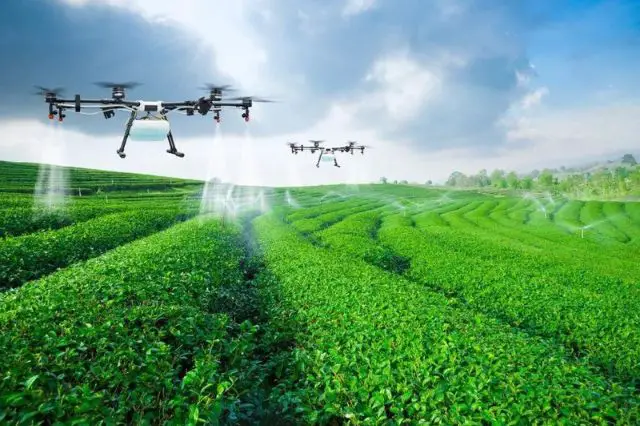Planting the Future: A Look at Advanced Control Instruments in Agriculture

Agriculture has recently witnessed a remarkable transformation by integrating advanced control instruments. These cutting-edge technologies have revolutionized farming practices and paved the way for a more sustainable and efficient future.
In this blog post, we will delve into the world of advanced control instruments that companies such as PCI Pro provide in agriculture, exploring their applications, benefits, and the potential they hold for the future of farming.
The Rise of Precision Agriculture
Precision agriculture, often called smart or precision farming, represents a significant shift from traditional farming methods. It involves using advanced control instruments, such as sensors, drones, and automated machinery, to optimize various aspects of crop production. This data-driven approach enables farmers to make informed decisions, reduce resource wastage, and enhance crop yields.
Sensors and Data Analytics
One of the fundamental components of precision agriculture is the use of sensors. These sensors can measure various variables, including soil moisture levels, temperature, humidity, and nutrient content. By collecting real-time data from the field, farmers gain valuable insights into the condition of their crops and soil.
Advanced control instruments also include data analytics platforms that process the sensor data. Machine learning algorithms can analyze the information collected and provide recommendations to farmers. For example, if soil moisture levels are too low, the system can automatically trigger irrigation to ensure optimal conditions for crop growth. This level of automation and data-driven decision-making significantly improves resource efficiency.
Drones and Remote Sensing
Drones with high-resolution cameras and multispectral sensors have become indispensable tools in modern agriculture. They can capture detailed images of fields, allowing farmers to monitor crop health, identify pest infestations, and assess the overall condition of their crops from above.
Remote sensing technologies on satellites also play a crucial role in precision agriculture. These satellites can provide large-scale data on crop conditions, helping farmers make informed regional or even global decisions. Integrating drone and satellite data with ground-level sensor information creates a comprehensive picture of the agricultural landscape.
Automated Machinery and Robotics
Advanced control instruments extend beyond data collection and analysis; they also encompass automation in farm machinery. Automated tractors, planters, and harvesters can operate with precision, reducing human labor and minimizing the risk of human error. These machines can follow predefined routes, adjust planting depth and spacing, and optimize harvesting procedures.
In addition to automation, robotics are increasingly being used in agriculture. Robots can perform weeding, fruit picking, and even autonomous drone deployment. These technologies improve efficiency and address labor shortages in the agricultural sector.
Benefits of Advanced Control Instruments in Agriculture
The adoption of advanced control instruments in agriculture brings forth a multitude of benefits:
Increased Crop Yields: By optimizing resource use and responding to crop needs in real-time, precision agriculture can lead to higher crop yields. This is essential for meeting the growing global demand for food.
Resource Efficiency: Precision agriculture reduces resource wastage by applying inputs such as water, fertilizer, and pesticides only when and where needed. This not only saves costs for farmers but also mitigates environmental impact.
Environmental Sustainability: Precision agriculture contributes to a more sustainable and eco-friendly farming model by minimizing the use of chemicals and resources. It reduces soil erosion, water pollution, and greenhouse gas emissions.
Improved Profitability: The combination of higher yields and reduced operational costs can significantly enhance the profitability of farming operations, ensuring economic sustainability for farmers.
Data-Driven Decision-Making: Advanced control instruments provide farmers with valuable data and insights that empower them to make informed decisions, reducing guesswork and uncertainty.
Reduced Labor Demands: Automation and robotics in agriculture alleviate the labor shortage challenges the industry faces, making farming more attractive and viable for future generations.
The Future of Agriculture with Advanced Control Instruments
As technology continues to advance, the future of agriculture holds exciting possibilities:
AI and Machine Learning: AI-powered systems will become even more sophisticated, enabling predictive modeling for crop yields, disease outbreaks, and weather patterns. This will help farmers plan better and respond proactively to challenges.
Blockchain and Supply Chain Transparency: Blockchain technology will be used to create transparent supply chains, allowing consumers to trace the origins and journey of their food products. This can boost consumer trust and enhance food safety.
Climate Resilience: Advanced control instruments will be pivotal in adapting agriculture to the challenges of climate change. Drones and sensors will help monitor changing conditions and facilitate resilient farming practices.
Urban Agriculture: Precision agriculture will extend into urban environments, with vertical farming, hydroponics, and aquaponics systems crucial in providing fresh, locally sourced produce to urban populations.
Conclusion
Advanced control instruments have ushered in a new era of agriculture, one characterized by data-driven decision-making, resource efficiency, and sustainability. As technology continues to evolve, the possibilities for improving farming practices are boundless.
By embracing these innovations, farmers can ensure the long-term viability of their operations while meeting the global demand for food in an environmentally responsible manner. The future of agriculture is here, and it’s bright with potential.




